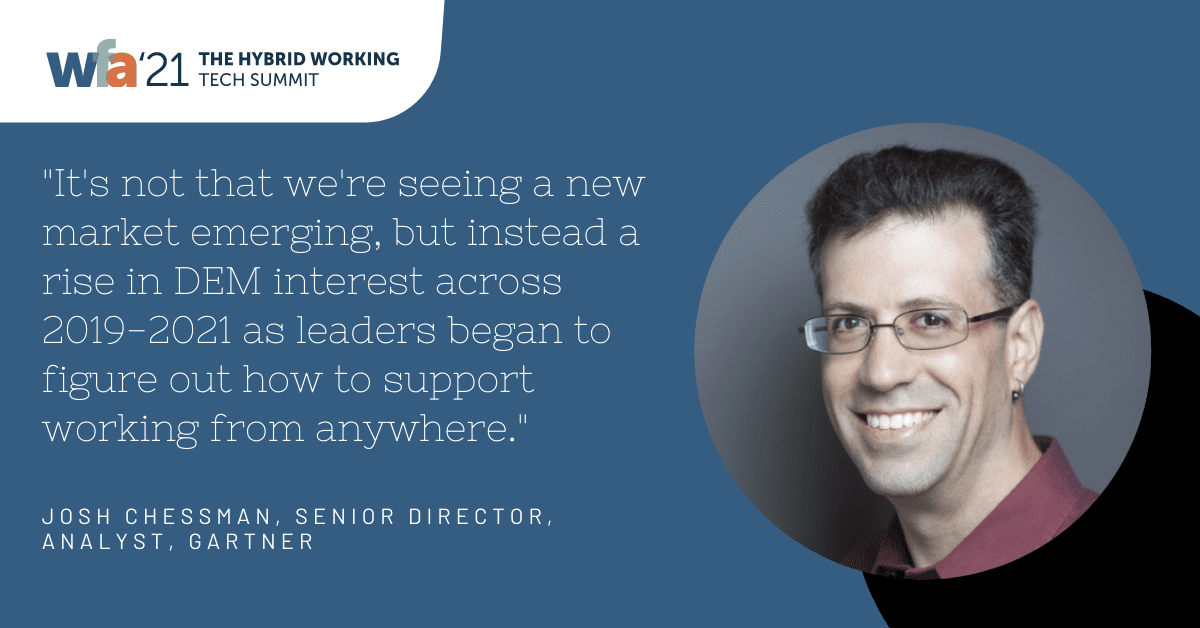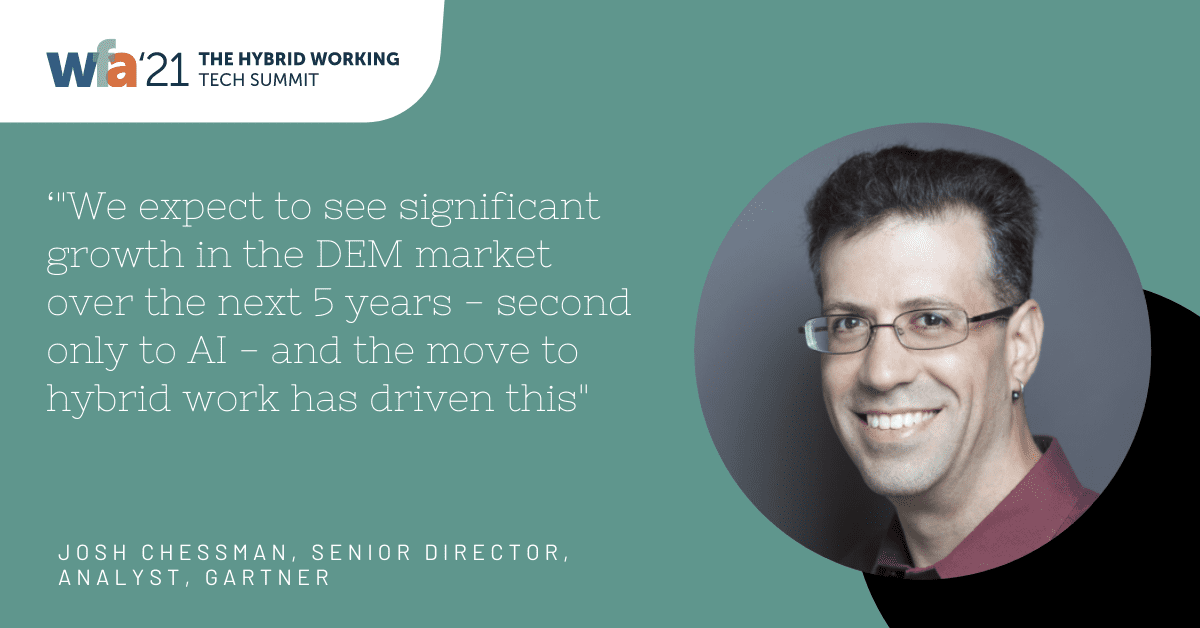From 30 to 60, Overnight
What we initially believed would be a temporary measure – “a few weeks working from home? What a treat!” – is going nowhere and is, in fact, evolving. We’re moving away from the emergency state of fully remote work and hybrid work is quickly cementing it’s position as the way of the future. And, SPOILER ALERT! – it’s not going anywhere.
In fact, even prior to the pandemic, remote working was up 400% since 2010 and research shows that 70% of workers would like to be remote at least five days per month. On average, people generally like the flexibility hybrid work brings with it and organizations are responding to this. Gartner’s CFO survey identifies a pivot to hybrid work, with nearly three in four CFOs planning to shift at least 5% of previously on-site employees to permanently remote positions post-pandemic, with others balancing time between the office and the home.
Nightmare or Fantasy?
However, whilst we’re certainly making huge strides when it comes to hybrid work, it’s not without its challenges: from poor-performing devices, to VPN issues, connectivity struggles, and new security threats. We need to consider solutions to these challenges and that’s where Digital Experience Monitoring (DEM) comes in to play.
Digital Experience Monitoring isn’t a new concept, but there’s certainly been an upward trend in DEM inquiries between 2020 – 2021, with interest from IT services nearly doubling, driven by the new requirement to support remote workers.

DEM which, from Gartner’s perspective, generally consists of User Sentiment Monitoring, Synthetic Transaction Monitoring, and Endpoint Monitoring – is helping to address key hybrid working challenges. Let’s take a closer look at some examples.
1. Where is the problem?
Is the problem with the Internet, the home WiFi, the VPN, or somewhere else? Organizations are no longer in control of their employee’s environment, making it incredibly difficult to monitor their network, applications, infrastructure, etc. to easily identify where and when there is a problem. With IT no longer having full visibility, it’s difficult to identify where issues lie. For example, users may be reporting slow performance, but everything is showing green from an IT dashboard perspective. So, how can we figure out where the problem is? Synthetic Transaction Monitoring is the answer; it can be deployed on an endpoint and run simulated transactions, testing against critical applications to see what performance is like.
2. How do I support my users if they aren’t in the office?
Most helpdesks are used to having people in offices and used to having significant instrumentation when it comes to networks so that they could look at flow data or port issues and performance, for example. Organizations have lost all traditional avenues for visibility into end users. So, what can we do?
Well, in lieu of deploying a collector at every employee’s home, Endpoint Monitoring is the logical option. It allows us to see what the user is experiencing and resolve issues remotely. Not only can you see what’s happening and potentially resolve the issue, you gain better insight into the user experience and endpoint to make effective decisions moving forward.
3. Are my users having problems and not calling the helpdesk?
Nobody is calling the helpdesk and calls are down… is that because things are better when we’re not in the office? Or because we’re actually having problems, but they are going unreported? How can we understand which of these it is?
You could call every user, but that’s not a practical option and will take a lot of time. User sentiment metrics on the other hand are much more effective. Utilising a user survey, we can ask specific questions to learn more about their experience – How is your connection? How are you feeling about this custom app? Is your internet ok? This will yield useful information and details on what people are truly experiencing. Whilst metrics are great, they don’t tell the whole story and user sentiment surveying can help to resolve that.

This is where DEM for ITOps is headed; a combination of Synthetic Transaction Monitoring, User Sentiment, and Endpoint Monitoring that lead to a better User Experience. And – hopefully – providing a good user experience for employees working in a hybrid environment.




